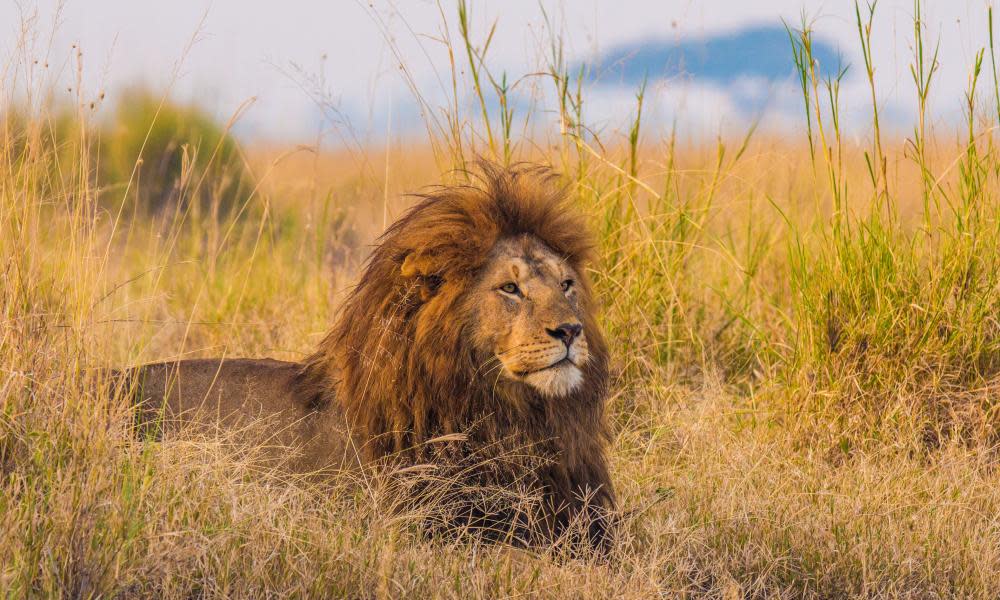US says man can bring back 'skin, skull, teeth and claws' of hunted Tanzania lion

The Trump administration has authorized a Florida man to bring back the “skin, skull, teeth and claws” of a lion he hunted in Tanzania, granting the first permit to import a lion from that country since the species gained protection under the US Endangered Species Act.
Environmental organizations say the move could open the floodgates for importing other endangered species such as lions and rhinos. A freedom of information request made public by the US Fish and Wildlife Services (FWS) also revealed that the hunter, Carl Atkinson, was represented by lawyer John Jackson III, who is also a member of the Trump administration’s International Wildlife Conservation Council, a controversial advisory board that promotes trophy hunting.
“This is all very concerning,” said Tanya Sanerib, the international legal director for the Center for Biological Diversity. “It signals that the administration is ready to approve, trophy imports from Tanzania despite that country’s history of wildlife mismanagement.”
Under the Obama administration, the import of elephant trophies from Tanzania was banned – due to concerns that the government was ineffective at curbing poaching, leading to catastrophic population declines. Under Trump, the FWS reversed course and decided to instead evaluate applications to import elephant and lion trophies from all countries on a case-by-case basis.
Documents released by the FWS indicate that the agency justified granting the permit after sending a delegation to Tanzania in November and ascertaining that the country was responsibly managing lion hunting. “But there’s no indication of what exactly improved or changed over the past couple of years,” Sanerib said.
The FWS also contended that the current Tanzanian lion population is thriving at approximately 17,000, but that data was reported by the Tanzania Wildlife Research Institute in 2010.
Part of the problem is that it is very difficult to track lion populations across their large habitat, which covers hundreds of thousands of square kilometers. “It’s a really daunting prospect to even say whether the population is increasing or declining,” said Craig Packer, a lion researcher at the University of Minnesota who was expelled from Tanzania after exposing corruption in the government’s wildlife management. “These are shy animals who live across a vast expanse of land.”
It’s equally challenging to track the ripple effects of one lion’s death. Trophy hunters often target mature male lions – both because these lions are aesthetically appealing and because many countries, including Tanzania, prohibit the killing of male lions younger than six in order to give them a chance to breed. But older males often lead their pack, and hunters who kill these lions can leave a power vacuum, and lions vying to become the new leader will kill the previous one’s offspring.
“And besides, unless you’re conducting some sort of a long-term study of known individuals, it can be hard to know a lion’s age by just looking,” said Scott Creel, a conservation biologist at the University of Montana, so hunters could inadvertently kill younger lions.
In a statement, FWS simply reiterated that “legal, well-regulated hunting” can help fund and promote wildlife conservation.
Last week, the department indicated that it would issue a permit to a Michigan hunter to import the skin, skull and horns from a critically endangered black rhinoceros killed in Namibia.

